This summer, I plan to play through as many etudes as possible. The goal is to identify etudes that might be most suitable for my students next academic year, become more familiar with etudes that I have little experience with, revisit some that I have worked on in the past, and develop my technique. I’m aiming to play through as many as possible; I’m not shooting for technical perfection, although I will keep track of etudes that I have trouble with and work on those later this year. The main idea is to broaden my knowledge. I fully expect this project to progress unevenly; while it is summer and I’m not teaching classes, there is still other work to be done. However, I’m going to keep up with my progress here. I’d love to hear suggestions from fellow flutists: what are your favorite etudes? Which do you despise? Which ones do you prefer from a pedagogical standpoint? I’ve already received some excellent suggestions via Twitter, so keep them coming!
Also, a big thanks to the South Dakota State University Briggs Library, which supplied many of these through Interlibrary Loan.
15 May 2014
Boehm – Twenty-Four Studies, Op. 37 – these would be manageable for my students, although I think the key signatures would be a bit of a challenge!
Gariboldi – Fifteen Modern and Progressive Etudes – while these still have some heavily-sharp key signatures and would be less familiar to students, they seem to fall on the fingers a bit easier than the Boehm today. Fun to play.
16 May 2014
Demersseman – Fifty Melodic Studies, Op. 4 – I played through the first 25 of these. Rather simple but enjoyable. They would be excellent sight reading examples for juries.
Köhler – 25 Romantic Etudes, Op. 66 – Cute!
17 May 2014
Köhler – Virtuoso Etudes, Op. 75 – I made it through the first 10 of these. I could stand to work on these a bit.
Gariboldi – Twenty Etudes, Op. 132 – Nice for a younger student. Key signatures aren’t challenging, and they are comfortable on the fingers.
18 May 2014
Andersen – 24 Studies, Op. 21 – A mix of difficulty. Some are fairly simple and others sneaked up on me a bit. I will revisit some of them. Not a bad choice for some of my advanced students.
19 May 2014
Andersen – 26 Caprices, Op. 37 – These would be excellent for some of my students. I wasn’t familiar with these caprices, as I only have experience with his other etudes.
Hugues – 40 Studies, Op. 101 – I played through the first 26. Nice collection to work on slurred scale passages.
20 May 2014
Hugues – 40 Studies, Op. 101 – Finished these up.
Kummer – 24 Melodic Etudes, Op. 110 – I like the fact that these change keys in the middle of the etude. Requires a bit more flexibility than those that stay in the same key throughout.
Berbiguier – 18 Studies – My students spent a long time with these before I inherited them, so they have a lot of exposure to them. I like them a lot and will use them in the future, but my older students need something new.
Andersen – 24 Studies, Op. 15 – I played through the first 11 of these.
21 May 2014
Hoover – 9 Etudes – These are great. They are clearly modern, which is useful in the context of so many traditional etudes. Luckily, I attended a workshop with Ms. Hoover where she listed the errata. You’ll want to be sure to do a search for them before tackling these etudes.
Andersen – 24 Studies, Op. 15 – Finished these up today. My students have worked on these in the past. They aren’t my favorite Andersen etudes but they certainly work.
22 May 2014
Clardy – Flute Etudes Book – This showed up unexpectedly on my doorstep today courtesy of my sister-in-law.
28 May 2014
Clardy – Finished these up. This book includes 51 etudes by Andersen, Donjon, J.S. Bach, Boehm, Fürstenau, Karg-Elert, Köhler, and Schade. I like that this book generally includes multiple etudes for each key, which means you get really good exposure to how each key feels. Clardy writes a nice introduction to each etude. I think this would work well for a very advanced high school student, a college student who is working on etudes for the first time, or a college student who might like a little variety instead of working on the etudes of one composer for an extended period of time.
Andersen – 24 Exercises, Op. 30 – Good stuff.
Andersen – 18 Etudes, Op. 41 – Bite sized but very effective.
Andersen – 24 Etudes, Op. 63, Vol. 1 – I worked through 1 – 7. Some tricky accidentals in these so far.
29 May 2014
Andersen – 24 Etudes, Op. 63, Vol. 1 – I finished up this volume. These are generally more challenging than most of the other etudes on my list so far.
Andersen – 24 Etudes, Op. 63, Vol. 2 – I worked on part of the first one.
30 May 2014
Andersen – 24 Etudes, Op. 63, Vol. 2 – Finished up this volume. These are tricky and not conducive to sight reading. They’re quite long — some are five pages — and are challenging. These would be good to revisit at a later time.
Gariboldi – 15 Grand Exercises, Op. 139 – I played through the first 12.
31 May 2014
Gariboldi – Grand Exercises, Op. 139 – Finished these. Lots of repetitive patterns and alternation between two-note segments.
Altes – 26 Selected Studies – I first worked on these in high school, so I am trying to avoid falling back into the technical habits and tone of a 15 year-old! I played through 1 – 12.
1 June 2014
Altes – 13 – 23.
2 June 2014
Altes – Finished these up. These would work well for my more advanced students, as they are slightly long and get progressively longer later in the book.
Kummer – Etudes, Op. 129 – I played through the first 30.
3 June 2014
Kummer – Etudes, Op. 129 – Finished these up. These are short and sweet.
Casterede – 12 Studies – I really enjoyed these and look forward to spending more time with them.
4 June 2014
Bitsch – 12 Studies – I like that each etude is labelled with the specific goal (e.g., “finger evenness,” “double tonguing,” “lip flexibility”).
6 June 2014
Andersen, Op. 33 – These are nice. Not extremely long. Well-focused.
Fürstenau, Op. 107 – Preludes and etudes through G Major.
8 June 2014
Fürstenau, Op. 107 – Preludes and etudes through G-sharp minor.
9 June 2014
Fürstenau, Op. 107 – Finished these. I really love the contrast between the prelude and the following etude.
Hugues – 30 Studies, Op. 32 – These don’t seem as beneficial as some of the others I have played through. Not very difficult but they don’t seem to be as focused.
12 June 2014
J.S. Bach – Bach Studies – These are fantastic and are worth working on for years.
Jeanjean – Modern Etudes – Where have these been all my life? Really nice. I worked on the first six of these.
13 June 2014
Jeanjean – Modern Etudes – Finished these. Excellent. Looking forward to working on them thoroughly in the fall.
Wood – Studies for Facilitating the Execution of the Upper Notes of the Flute – Just like the title, these are a handful. I worked on the first three.
George/Louke – The Flute Scale Book: A Path to Artistry – I played through a large portion of this book. It’s dense and quite comprehensive. In fact, it deserves a blog post of its own, so stay tuned.
14 June 2014
Wood – Studies for … – Finished the rest of these. This is a great book for maintenance work.
Köhler – Virtuoso Etudes – 11 – 20.
George/Louke – Flute Scale Book – Worked on various exercises in this again today. Mainly thirds.
15 June 2014
Karg-Elert – 30 Studies, Op. 107.
George/Louke – Flute Scales Book – Dominant seventh chords; modal scales.
17 June 2014
Julius Baker – Daily Exercises for the Flute – The beginning of this book is very much like Taffanel & Gaubert. The second half differs; it includes exercises on slurring expanded intervals, excerpts from the literature to address staccato double tonguing, and duets.
Terschak – Daily Exercises, Op. 71 – These are nice. Enough of a challenge to be worthwhile for students but not too simple.
Reichert – 7 Daily Exercises, Op. 5 – I played through the first two.
18 June 2014
Reichert – Finished these. This is a manageable number of exercises for daily maintenance.
Schocker – 10 Etudes. I like these. They are challenging and seem to be a mix of difficulty levels. Some felt considerably more difficult than others but not in a progressive way. They are modern, and they absolutely – as described inside the front cover – “stretch the flutist’s technique.” This is another collection that I should spend more time with.
Drouet – 72 Studies. These are relatively short and are good for teaching phrasing and style.
Voxman – Selected Studies – Played through D Major.
9 June 2014
Voxman – Selected Studies – Finished these. Another collection of etudes taken from various composers, including Karg-Elert, Andersen, Köhler, and others. Also includes scales at the back: major, minor, arpeggios, whole tone, and scales in thirds.
Reichert – Six Etudes, Op. 6 – Lots of wide intervals. Good practice for slurring or double tonguing.
Paganini – Caprices – I played through the first two.
20 June 2014
Paganini – Caprices – Through 14.
21 June 2014
Paganini – Finished these. I had forgotten how much fun these are.
Shim – Scale Studies for Beginner and Intermediate Students – Through D-flat major.
22 June 2014
Shim – Finished these up.
23 June 2014
Boehm – 24 Studies, Op. 26
24 June 2014
Moyse – 48 Studies of Virtuosity, Book 1 – I played through the first 12.
Schade – 24 Caprices.
26 June 2014
Boehm – 12 Studies, Op. 15.
29 July 2014
Gariboldi – Etudes Mignonnes – I’ve really enjoyed all of the Gariboldi etudes. They are appealing and feel comfortable on the fingers.
Genzmer – Modern Studies, Book 1 – They do feature musical elements that tend to appear in “modern” works. Lots of focus on rhythm, especially.
Kohler – 35 Exercises, Op. 33 (Books 1 and 2) –
31 July 2014
Gariboldi – 30 Easy and Progressive Studies – Again, these Gariboldi are really enjoyable. These would work well for some of my students.
Dubois – 13 Studies Studies of Medium Difficulty – These are fascinating.
1 August 2014
Hugues – 40 New Studies, Op. 75 – I like these.
Dick – Flying Lessons – These take considerable study. The language is non-traditional, and it’s necessary to learn alternate fingerings, including multiphonics. These are classics, though, and deserve attention.
4 August 2014
Moyse – 24 Little Melodic Studies – Gold. Nice melodic etudes plus variations on each. Not too lengthy but excellent for teaching phrasing.
Genzmer – Modern Studies, Book 2 – These are more difficult than Book 1 and feature more complex time signatures and harmonics.
Briccialdi – 6 Grand Studies – These were long-winded. Each study is quite long. This collection would not be my first (or second) choice.
13 August 2014
Stallman – The Flutist’s Détaché Book – This is a substantial volume that includes 88 exercises to work specifically on articulation. It is organized in sections, including single tonguing, double tonguing, tremolando, triple tonguing, mixed articulation, dotted articulation, and then solos that incorporate these. Exercises are taken from the studies of Altes, Andersen, Donjon, Boehm, among other prominent flute etude composers. I played through the exercises today, though, to be fair, if I had played them previously this summer, I didn’t repeat them this time.
14 August 2014
Stallman – I finished up this book today, which included playing through the solos.
Bozza – Ten Studies in Karnatic Modes – I played through the first three of these.
15 August 2014
Bozza – Finished these. These are tricky and deserve more than just a quick play-through. I will be revisiting these.

![IMG_1463[1]](https://www.tammyevansflute.com/wp-content/uploads/2015/03/IMG_14631-600x448.jpg)
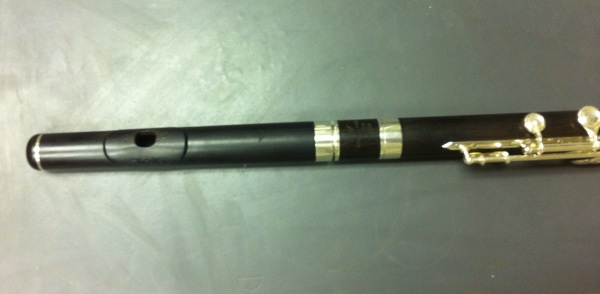
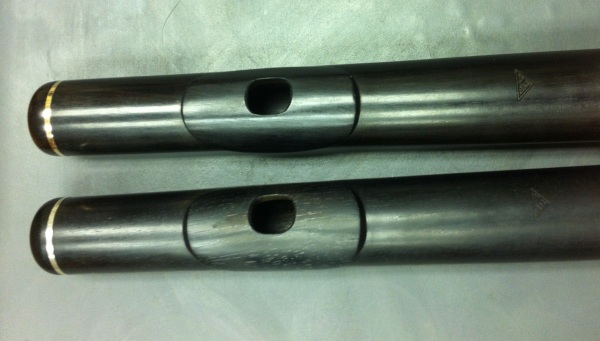
![IMG_1305[1]](https://www.tammyevansflute.com/wp-content/uploads/2014/12/IMG_13051-600x448.jpg)
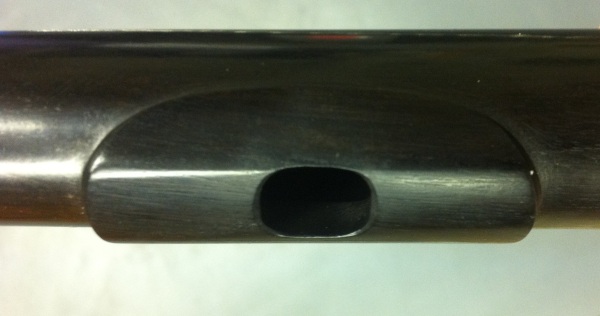
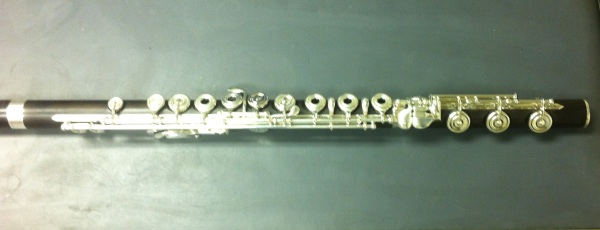
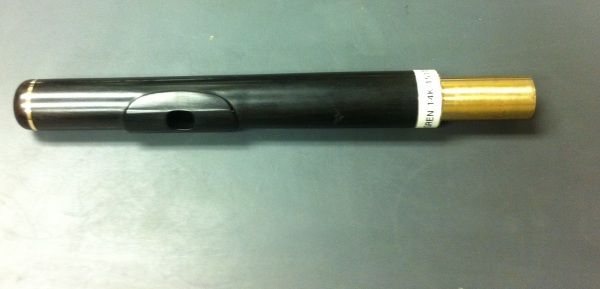
![IMG_1302[1]](https://www.tammyevansflute.com/wp-content/uploads/2014/12/IMG_13021-600x448.jpg)
![IMG_1286[1]](https://www.tammyevansflute.com/wp-content/uploads/2014/11/IMG_12861-600x448.jpg)
![IMG_1287[1]](https://www.tammyevansflute.com/wp-content/uploads/2014/11/IMG_12871-600x448.jpg)
![IMG_0988[1]](https://www.tammyevansflute.com/wp-content/uploads/2014/07/IMG_09881-e1406752564439-110x110.jpg)
![IMG_0701[1]](https://www.tammyevansflute.com/wp-content/uploads/2014/05/IMG_07011-e1400190159234-110x110.jpg)